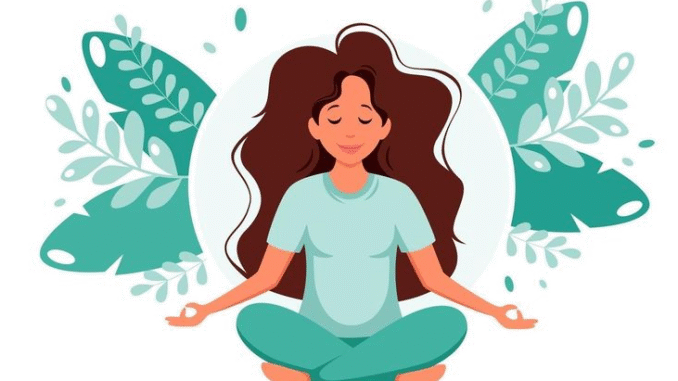
Beginner’s Guide to Mindful Living for Better Health
In our fast-paced, always-connected world, it’s easy to live on autopilot. We rush through meals, multitask constantly, and often feel stressed or overwhelmed. But what if you could slow down, live more intentionally, and improve your health at the same time?
Welcome to mindful living.
Mindful living is the practice of being fully present and engaged in each moment—without judgment or distraction. It’s not just about meditation on a cushion (though that’s great, too). It’s about bringing awareness to everything you do: eating, working, exercising, socializing, even breathing.
This beginner’s guide to mindful living for better health will show you what mindfulness really is, why it matters for your physical and mental health, and how you can start today with practical, easy-to-implement habits.
What Is Mindful Living?
Mindfulness is the art of paying attention, on purpose, in the present moment, without judging your experience.
Mindful living means applying that awareness to all areas of life. Instead of racing through your day distracted and stressed, you slow down and pay attention to what’s happening right now.
Examples of mindful living:
✅ Savoring the taste of your food instead of rushing meals.
✅ Listening attentively to a friend without planning your reply.
✅ Noticing your breath when you’re anxious.
✅ Walking while truly observing the sights, sounds, and sensations around you.
It’s simple—but powerful.
Why Mindful Living Improves Your Health
Mindful living is more than just a trend. Science backs its benefits for both mental and physical health.
Mental Health Benefits:
- Reduces stress and anxiety
- Improves focus and clarity
- Increases emotional regulation
- Supports better mood and well-being
- Reduces risk of depression relapse
Physical Health Benefits:
- Lowers blood pressure
- Improves sleep quality
- Supports healthier eating habits
- Reduces chronic pain
- Strengthens immune function
Mindfulness changes the brain itself. Studies show it can increase gray matter in regions associated with learning, memory, and emotion regulation.
Core Principles of Mindful Living
Before diving into “how-to” tips, it helps to understand the core principles that guide mindful living:
✅ Present moment awareness – Focus on what’s happening right now, not the past or future.
✅ Non-judgment – Notice your thoughts and feelings without labeling them “good” or “bad.”
✅ Acceptance – Allow experiences to be what they are instead of resisting them.
✅ Compassion – Treat yourself and others with kindness, especially during struggles.
✅ Intentionality – Choose your actions deliberately instead of reacting automatically.
When you keep these principles in mind, you can bring mindfulness into any part of life.
How to Start Mindful Living: A Step-by-Step Guide
Let’s get practical. Here’s a simple roadmap for bringing mindfulness into your daily routine.
1. Start with Your Breath
Your breath is always with you, making it the perfect anchor for mindfulness.
How to practice:
- Sit comfortably.
- Close your eyes or soften your gaze.
- Inhale deeply through your nose for a count of 4.
- Exhale slowly through your mouth for a count of 6.
- Repeat for 5–10 minutes, focusing only on the breath.
Why it works:
Breathing mindfully activates the parasympathetic nervous system, reducing stress and calming the mind.
2. Practice Mindful Eating
We often eat quickly, while watching TV or checking our phones. Mindful eating means truly experiencing your food.
How to practice:
- Sit down without distractions.
- Observe your food’s colors, textures, and smells.
- Take small bites and chew slowly.
- Notice the flavors and sensations.
- Pause between bites.
Benefits:
- Better digestion.
- More enjoyment of meals.
- Reduced overeating.
Mindful eating can transform your relationship with food.
3. Try Daily Mindfulness Meditation
Meditation is formal mindfulness practice that trains your brain to be more aware and calm.
How to start:
- Set aside 5–10 minutes daily.
- Sit comfortably and close your eyes.
- Focus on your breath or a simple mantra.
- When your mind wanders (and it will), gently return to your focus.
Pro tip:
Use a guided meditation app like Headspace, Calm, or Insight Timer.
4. Be Fully Present in Everyday Activities
Mindfulness isn’t limited to meditation. You can bring it into anything.
Examples:
- Washing dishes: Feel the warm water, notice the soap’s scent.
- Walking: Observe the ground beneath you, the sounds around you.
- Showering: Feel the water on your skin, listen to its flow.
- Brushing your teeth: Notice the taste, texture, and movements.
Why it matters:
These simple moments become opportunities for calm and clarity.
5. Listen Mindfully
Good communication is essential for healthy relationships—and mindfulness improves it.
How to practice mindful listening:
- Focus fully on the speaker.
- Don’t plan your reply while they talk.
- Notice their tone, body language, and emotions.
- Respond thoughtfully, without interrupting.
Mindful listening fosters empathy, connection, and understanding.
6. Check In with Yourself Regularly
Many people go through their entire day without noticing how they feel.
Try this quick check-in:
- Pause.
- Ask yourself: How am I feeling right now?
- Where do I feel it in my body?
- What do I need in this moment?
Self-awareness helps you respond intentionally instead of reacting automatically.
7. Practice Gratitude Daily
Gratitude is a powerful form of mindfulness that shifts focus from what’s lacking to what’s abundant.
How to practice:
- Keep a gratitude journal.
- Write down 3 things you’re grateful for each day.
- Share your gratitude with others.
Research shows gratitude can improve mood, reduce stress, and even benefit physical health.
8. Simplify Your Schedule
Busyness often leads to stress and mindlessness. Simplifying your schedule gives you space to be present.
Tips to simplify:
- Prioritize what truly matters.
- Learn to say “no” without guilt.
- Leave gaps in your schedule for rest.
- Reduce multitasking.
Remember: Doing less can help you live more fully.
9. Limit Digital Distractions
Phones, social media, and notifications can keep you perpetually distracted.
How to manage them:
- Turn off non-essential notifications.
- Designate “phone-free” times (like meals or before bed).
- Take regular breaks from social media.
- Use apps that limit screen time.
Being less distracted means being more present in real life.
10. Cultivate Self-Compassion
Mindful living isn’t about being perfectly calm all the time. It’s about accepting yourself—even when you’re stressed or struggling.
How to practice self-compassion:
- Speak to yourself as you would to a good friend.
- Acknowledge your mistakes without harsh judgment.
- Remember: Imperfection is part of being human.
Self-compassion reduces anxiety, supports resilience, and improves overall well-being.
Sample Mindful Day Routine for Beginners
Here’s how you might integrate mindfulness throughout your day:
✅ Morning:
- Take 5 minutes for mindful breathing.
- Set an intention for the day (e.g., “I will stay present.”).
✅ During meals:
- Eat slowly without screens.
- Savor each bite.
✅ At work:
- Take 2-minute breathing breaks.
- Single-task instead of multitasking.
✅ Walking or commuting:
- Notice sights, sounds, and sensations.
- Leave the phone in your pocket.
✅ Evening:
- Reflect on what you’re grateful for.
- Practice 5–10 minutes of meditation.
- Disconnect from screens 30 minutes before bed.
Small changes like these can transform your day.
Final Thoughts: Start Where You Are
Mindful living isn’t about perfection or adding more stress to your life. It’s about being here, now, with acceptance and curiosity. Even a few minutes of mindfulness a day can make a meaningful difference over time.
You don’t need to change everything at once. Pick one or two of these habits to try this week. Notice how you feel. Then keep going.
Remember: A mindful life is a healthier, happier, more connected life.

